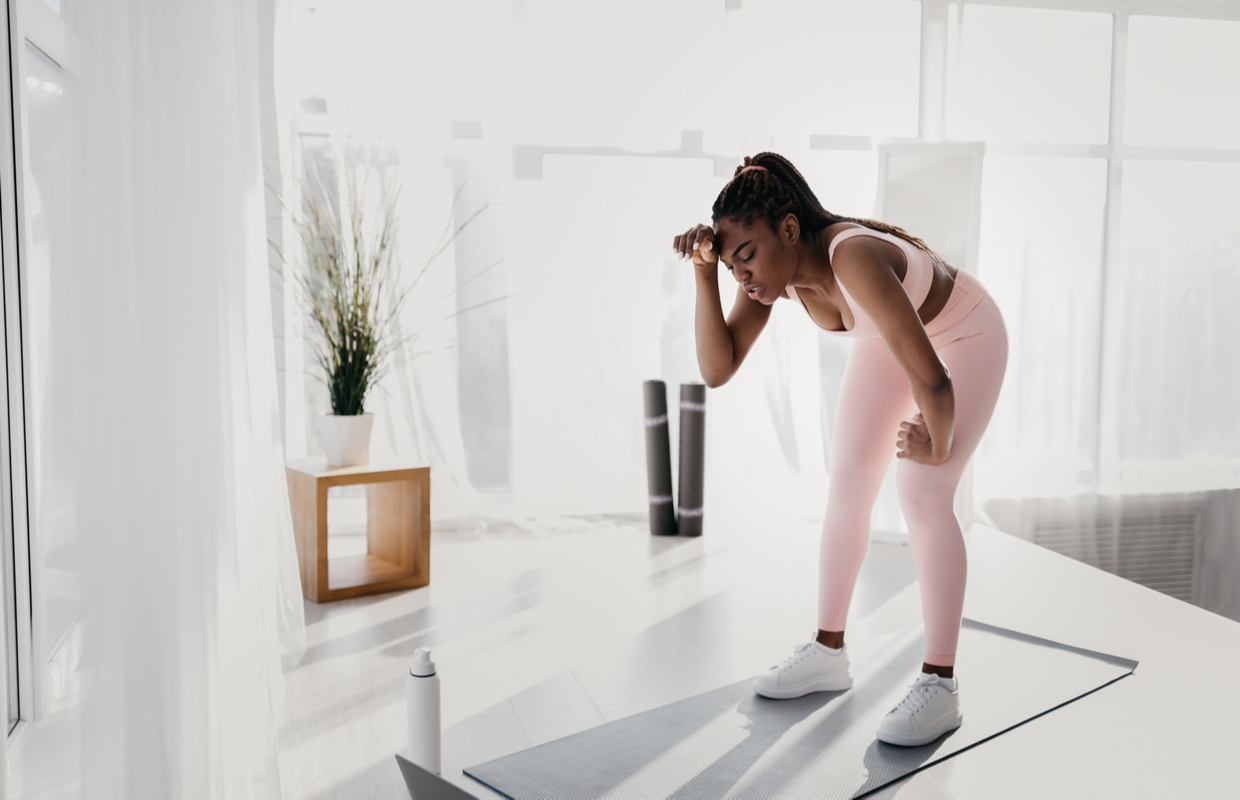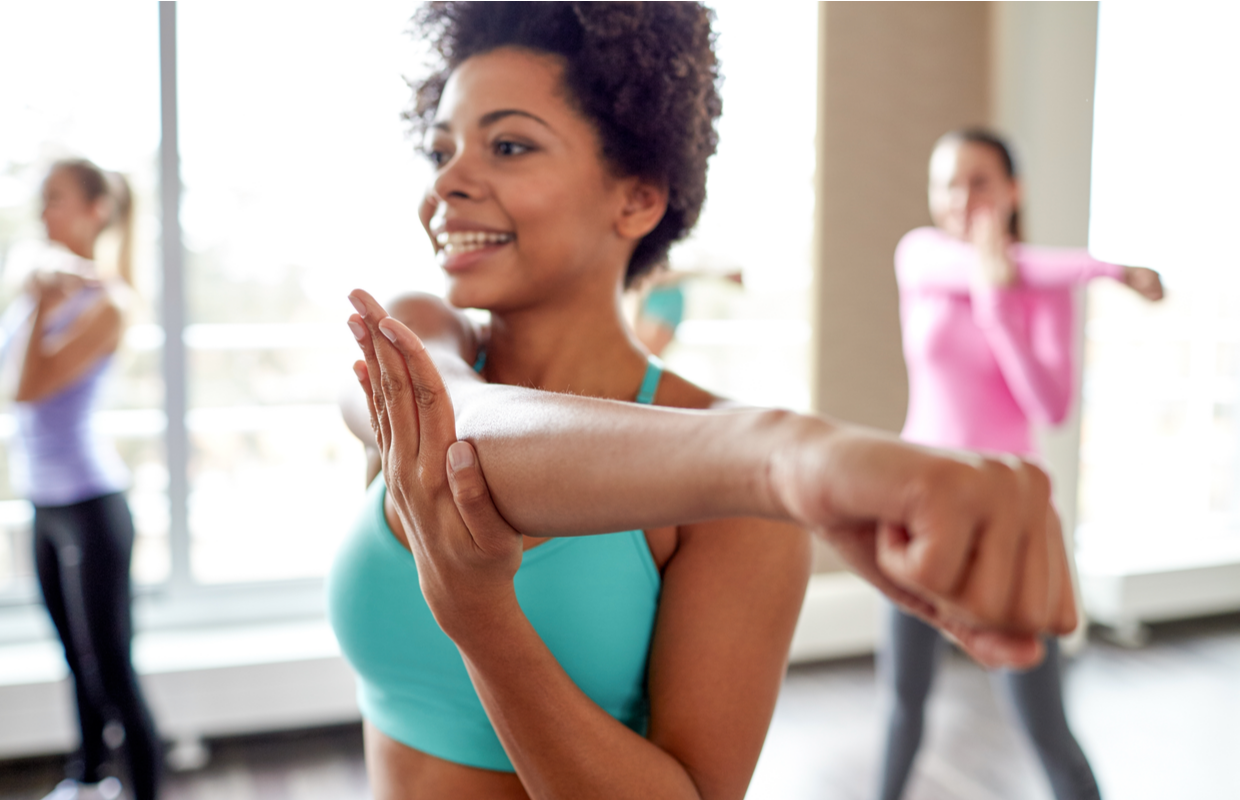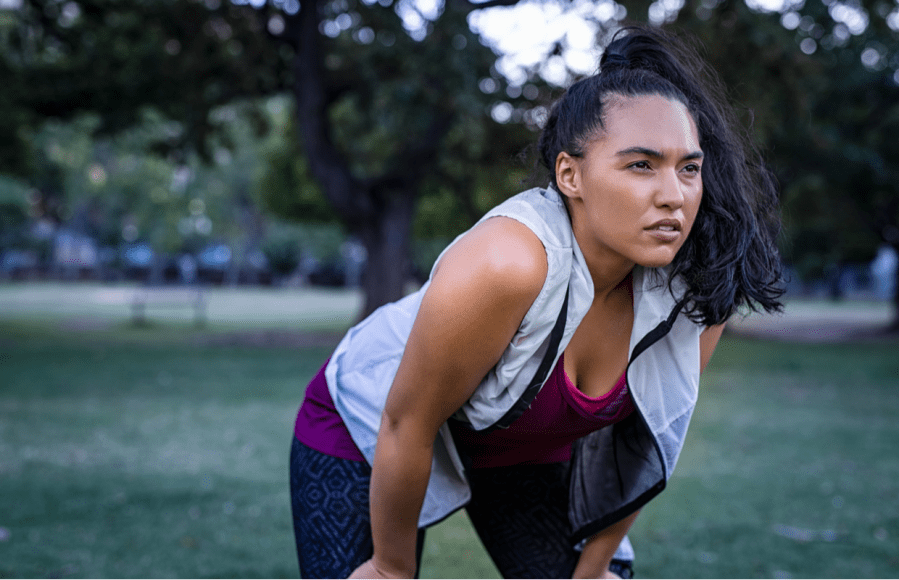Even a mild Covid infection can take its toll on the body, so when and how should you return to an exercise routine, and where can you seek help if you’re struggling? We quizzed the experts for their top tips on safely returning to exercise after a Covid-19 infection…
When fitness fan Victoria Martin* became symptomatic with mild Covid, she treated it as she would any other illness, with complete rest followed by gentle activity when she felt better. But her return to exercise was slow – a two-mile walk was leaving her feeling fatigued, and a cycle around the block made her breathless.
Her fitness returned, but it was weeks before moderate activity didn’t feel like hard work – something experts say is commonplace. ‘Covid is still an illness from which people take quite a big hit,’ says Dr Rebecca Robinson, sport and exercise consultant at the Centre in Health and Human Performance. ‘It involves all of the bodily systems and it can take time to recover from.’
Indeed, Dr Robinson notes that many report feeling short of breath, tight in the chest, and even noticing a higher heart rate when exercising up to a month after an acute Covid-19 infection However, the effects can also be longer-lasting.
‘It’s becoming increasingly apparent that Covid affects each person differently,’ adds Adam Hewitt, head of Clinical at Ten Health & Fitness. ‘Some people are suffering mildly and recovering quickly, while others are being severely affected and experiencing long-term difficulties – a condition that has become known as Long Covid.’

Is it safe to exercise after Covid?
While isolation rules have changed, the current advice is still to rest until you feel better after Covid, before gradually returning to exercise. ‘Even if you feel OK, I’d suggest at least five days of rest. This is because your body has taken a hit. It’s fighting an infection and is putting its resources elsewhere,’ says Dr Robinson, who also notes that you may have to wait longer for symptoms and fatigue to go.
‘Start with some light walks, range-of-movement exercises and some breathing rehab. After that, if you feel totally fine, kick it up to more of a moderate activity such as a brisk walk or a light jog, then check in on your heart rate, your breathing and your energy levels. If you feel more fatigued the next day, take a day off. Hold two days the same so that you know there’s no reaction, then move on. If there’s a reaction, stay at the level that was symptom-free.’
Be mindful of the signs that you need to take it easy, too. ‘Watch out for increased perceived exertion, a heart rate that’s more than 10bpm higher than you’d expect, difficulty breathing, dizziness or palpitations,’ says Dr Robinson. ‘These are reasons to stop and rest initially, but if you experience significant symptoms or chest pain, or symptoms last more than four weeks, seek medical advice.’
The pros agree that rest will certainly help your body to fight the infection. However, it is also important for your long-term health to return to activity. Unsure of where to start? These simple steps could get you moving again.
How to return to exercise safely after Covid
1. Seek some support when returning to exercise after Covid
First things first, get support from a qualified practitioner. ‘Working with an expert will put you in the best place to recover from Covid,’ says Hewitt.
‘While we’re still learning about the exact effects on the body, Covid has similar effects on the cardiovascular system and lungs to those seen with other, better known, conditions. Symptoms of these conditions can often be addressed and improved through clinical exercise prescription.’
2. Try breathwork to regain fitness
Breathwork can be a great way to kickstart your fitness regime. ‘Even though it doesn’t sound like a lot, breathwork can be very good, not only because it helps strengthen the diaphragm but also because it can calm down the nervous system’s fight-or-flight response that appears heightened in some people after Covid,’ says Dr Robinson.
Focus on breathing deeply and filling your lungs with oxygen. ‘The heart and lungs are the organs hit hardest by Covid, so improving their function is the biggest opportunity to reduce fatigue,’ adds Hewitt.

3. Reset your fitness expectations after Covid
Next, even if you’re feeling OK, try doing some low-intensity activity. ‘The body doesn’t know the difference between recovering from physiological stress and recovering from a hard training session, so if you jump straight back into hard training, you can push your body back to an under-recovery stage,’ explains Dr Robinson.
Stretching – especially in the thoracic/upper back region, which can get quite tight after a Covid infection – can be a good recovery activity, as can some easy walking and mobility work.
4. Take a 360° approach to fitness
Be mindful of the other things in your life that might impact your energy levels. ‘Learning about things we can monitor like how our breathing feels, what our heart rate is doing, and also our energy levels, is really important,’ says Dr Robinson.
‘We always want to try to fit exercise in, but sometimes rest and a gradual return pay more dividends. Thinking about work, life and exercise balance, can we delegate or put aside a few other extra demands on our energy and time whilst we optimise recovery?’
5. Don’t rush yourself when returning to exercise after Covid
Some people will feel good when exercising in the weeks after infection, while others will feel fatigued. Respect your body and take it one day at a time. ‘You will have days where you feel good, where exercise is easier. Then, the next day you may just walk to the kitchen and it tires you out,’ explains Hewitt.
‘Fatigue which you previously recovered from in one day can extend into multiple days when you are suffering from an illness. Accept that recovery will not be a linear progression from illness back to wellness.’
Need further help? The Ten Clinical Coronavirus Recovery programme is a rehab programme that has been designed to help reduce the impact of Long Covid symptoms and help patients recover faster from its impact. The programme is available in-person in studios across London and virtually through Ten’s virtual clinical sessions.








